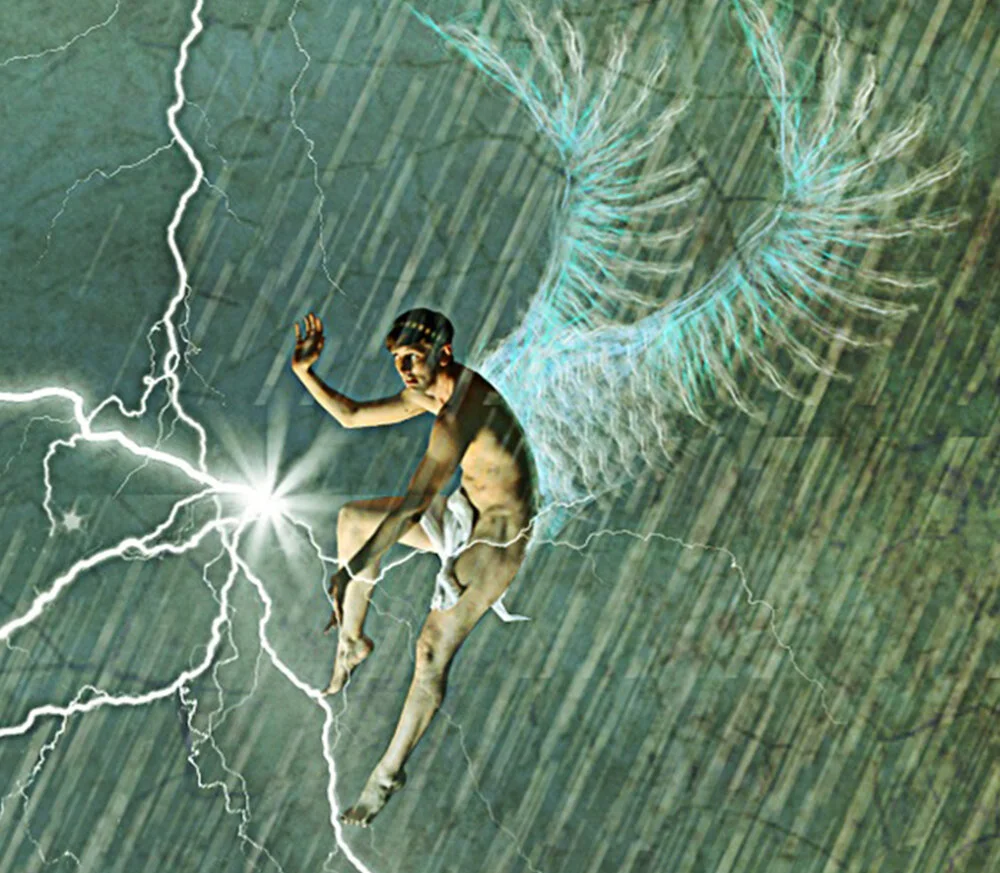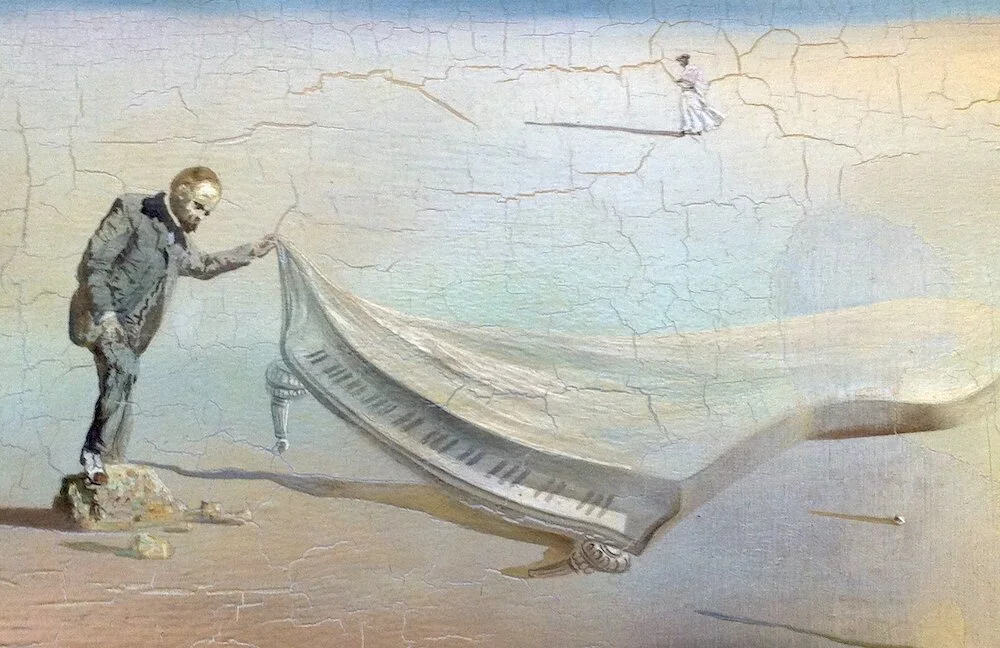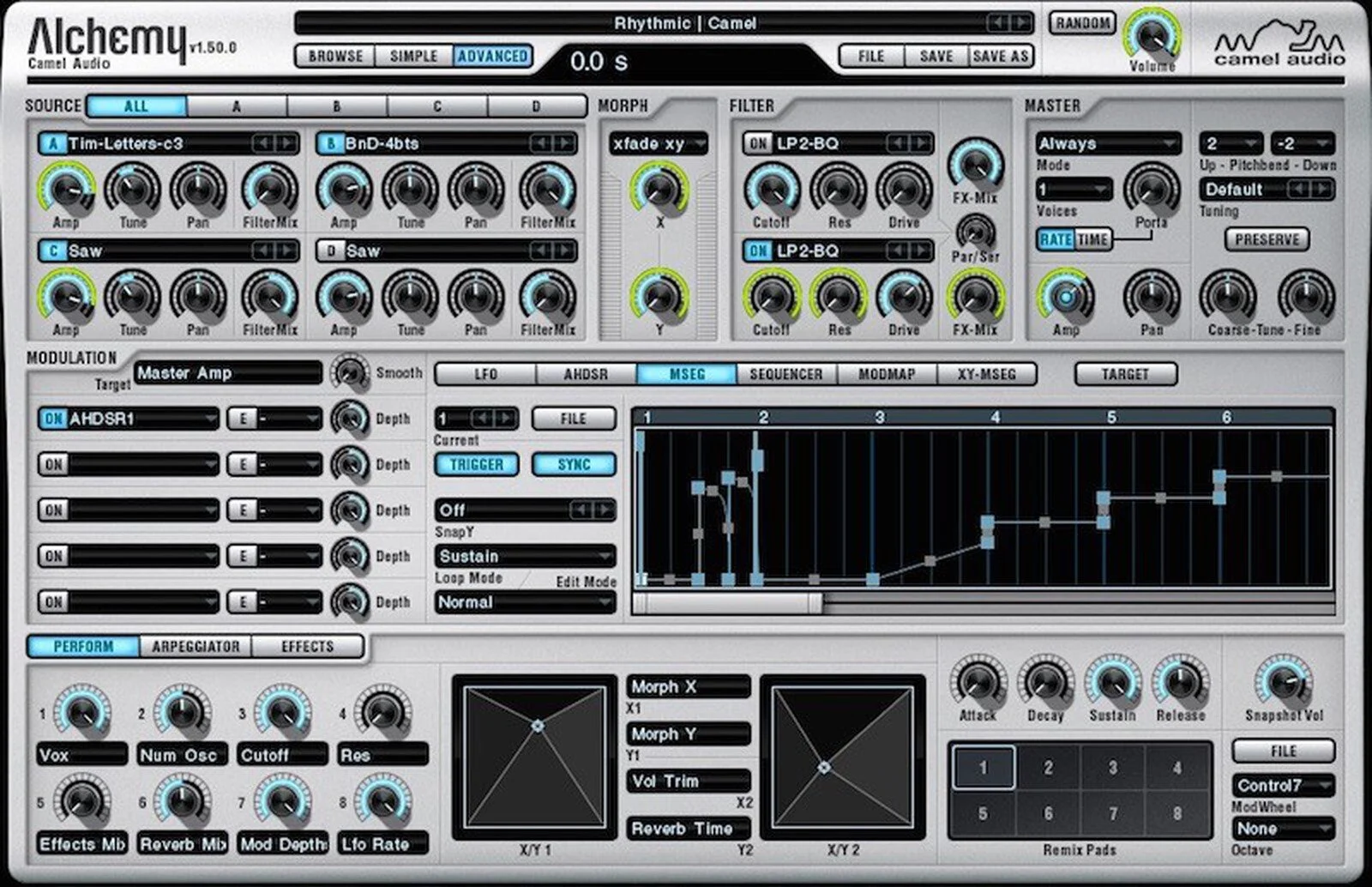Flamed Amazement
This is a recomposed version of the original Flamed Amazement, my first solo album, released in 2012. I’m performing a hybrid setup of outboard synths and soft synths on a laptop.
When I listened to it recently for the first time in many years, I wasn’t satisfied with what I heard. So I completely rehabilitated the original tracks, shortening the long tracks and rearranging a few parts to clarify the musical ideas. Inchmeal is the most transformed. All the original music was performed on keyboards and synths (no clarinet) in the summer of 2012. I was performing these pieces live in concert at the time, and captured the best performances for this album. I didn’t add any new material for this recomposed version.
How to Listen
The tracks of Mouth Feel are sequenced to be experienced from beginning to end, as with a traditional CD or vinyl record. To listen to the tracks without interruption, click here or on the album cover. This will take you to the album player page.
These are compressed mp3 files. You can listen to and download the uncompressed wav files from the ThinAirX page on Bandcamp.
Why it Sounds Like This
The five tracks on Flamed Amazement represent a range of compositional approaches, from laid-back ambient (title track), to 12-tone serial music (Odd Angle), to a wild Stockhausen-inspired fantasia on keyboard (Inchmeal).
This is electro-symphonic music—electronic technology in the service of compositional techniques borrowed from classical music. It doesn’t sound like most electronic music you hear these days. But it doesn’t sound like an electrified string quartet either. It’s somewhere in between.
I’m playing keyboards and a combination of hardware synths and soft synths on my laptop. No sequencers, but I do use arpeggiators (“arps”) that play patterns based on notes I press on the keyboard.
All tracks you hear were assembled from excerpts of live performances, recorded directly to stereo. No multi tracking. These tracks are essentially how I sound in live performance. I recommend you listen at full volume with headphones or on a good sound system to enjoy the stereo effects and hear all the details and little surprises I’ve tucked into the layers.
“I boarded the king’s ship; now on the beak, now in the waist, the deck, in every cabin, I flamed amazement.”
Track Notes
Odd Angle of the Isle (11:04)
Ariel, sprite
The title comes from Shakespeare's The Tempest and describes a remote cove of the island where a lone castaway, Ferdinand, sits dazed and suspended in a magical limbo.
Melodies and harmonies are generated from a 12-tone row (all 12 notes of the chromatic scale, with no repeats) that you can hear clearly in the opening horn-like melody. The marimba obbligato is cycling a pleated version of the same 12 note series.
I don't adhere strictly to the row, as in traditional Webern-style 12-tone music, but use it more like the "head" of a jazz tune, a jumping-off point for a live jam that plays with the austere chromaticism of the melody. I apply a liberal heaping of delay, loopers, arpeggiation, and digital effects to thicken the textures.
The 12-tone row is not a anachronistic gimmick, but rather a device for unifying the whole piece despite its chromatic excesses. You can hear the melody poking through from time to time (sometimes backwards). The musical objective is to keep the tonality consistently and evenly chromatic by refusing to commit to a tonal center. This is what gives Odd Angle its suspended, other-worldly sound.
Odd Angle ends with a spate of pure electronic sounds, a la Morton Subotnick. To my ears, these early machine-generated sounds are the logical extension of atonality. Historically, that's what happened as experimental music evolved from pure chromaticism to pure sound in the middle of the last century. I'm tracing that evolution in Odd Angle by devolving the note-based jam into a swirl of electronic bleeps and sweeps.
The first five minutes or so are from a single performance on May 18, 2012. The rest is compiled from performances in July, 2012.
You can hear a very different version of Odd Angle rendered with only an electrified clarinet on Mouth Feel.
Ariel, flaming amazement
Flamed Amazement
The title is again from The Tempest. Ariel is boasting to Prospero how he used his magic to shipwreck the king’s ship:
I boarded the king’s ship; now on the beak,
Now in the waist, the deck, in every cabin,
I flamed amazement
The musical challenge here is to create a sustained, ambient piece that isn’t boring. You hear a simple four-note theme and melodic variations on that theme. The frequent key changes create a shifting landscape and add a slightly unsettling undertone to the overall feeling of peace and repose.
The first eight minutes of this track are taken from a single performance on July 4, 2012.
Gutterball
Gutterball was originally a test track I recorded in 2005 to explore the sound of a Kawai K5 additive synth module I had borrowed from Art Cohen. The K5 is that gritty sound you hear throughout the piece. It’s common practice to do test tracks, listen, then delete. But I always liked this tidbit, including its abrupt ending, and couldn’t bring myself to throw it out. It works well here as a wake up for listeners still floating in Flamed Amazement. It’s an intermezzo. In the context of the other long tracks Gutterball also makes for a fine musical joke.
Inchmeal
A chemist lifting with extreme precaution the cuticle of a grand piano (detail). Salvador Dali (1936), Art Institute of Chicago
Caliban (half fish-half man monster in The Tempest) hates Prospero. Prospero appropriated the island that rightfully belonged to Caliban, made him his slave, and torments him when he disobeys by sending spirits to pinch, sting, and bite him if he disobeys his master. Caliban curses Prospero:
All the infections that the sun sucks up
From bogs, fens, flats, on Prosper fall and make him
By inchmeal a disease.
Musically, Inchmeal is an homage to Nancarrow, Stockhausen, Ligeti, Ives, and other shock composers who pushed the piano to extremes, beyond the limits of what anyone thought a piano could or should do. They slammed elbows and fists and even 2x4s on the keyboard, composed violent melodies of pointillistic extremes, and altered the strings of the piano itself to grunge up the sound. They were the classical equivalent of Jimi Hendrix setting his guitar on fire in live performance while it was still plugged into the amplifiers.
Now in this same spirit, and with a rack of electronics at my disposal, I’m testing how far I can take a Roland stage piano into the realm of high-energy noise, building raucous textures and dense walls of glorious sound with abandon. The piece has no theme, no melody, no harmony, no key. The C-major “ta-da” fanfare serves as a reference point, an anchor in the midst of all the commotion, a device to heighten the absurdity (it’s the same C chord you hear when your computer boots up.)
The electronic effects are added one at a time—by inchmeal as it were. Delay, looper, more loopers, arpeggiator, grain delay, phasers, pitch shifters, hand-wave filter sweeps, excessive reverb, flangers.
Inchmeal is a piece that actually makes more sense in live performance because you can watch me as I whale about on the keyboard. This track is made mostly from two live performances in May, 2012.
The 2021 version offered here is a freshly recomposed version of the original 2012 track. I took the track apart, deleted some of the excess, and rearranged the parts to tell more of a story. The “ta-da” fanfare plays a role amid the chaos; you decide if it represents Caliban or Prospero.
Miranda, Prospero, Caliban (Ariel in the sky)
In The Tempest, Caliban is presented as a resentful monster. But as with so many of Shakespeare’s best characters, he’s a walking contradiction. Though a monster, he’s more tuned in to the beauty and magical sounds of his enchanted island than all the human characters chasing each other around the island. We know this from Caliban’s memorable “Be not afeard” soliloquy:
“Be not afeard; the isle is full of noises,
Sounds and sweet airs, that give delight and hurt not.
Sometimes a thousand twangling instruments
Will hum about mine ears, and sometime voices
That, if I then had waked after long sleep,
Will make me sleep again: and then, in dreaming,
The clouds methought would open and show riches
Ready to drop upon me that, when I waked,
I cried to dream again.”
Gear Notes
In 2012, when the original tracks for Flamed Amazement were recorded, I was playing a combination of hardware and software instruments. In the photo below from that period, the keyboard on the left (the Alesis Ion) sounds like a vintage analog synth and has an awesome arpeggiator—you can hear it as the obligatto opening Odd Angle of the Isle. I use the internal piano and marimba sounds of the big 88-key Roland stage piano for Inchmeal. By 2016 I had retired all the hardware, except the Roland piano. I got tired of hauling all that gear to performances.
Hardware
Roland SD300RX stage piano (88 keys)
Alesis Ion Analog Modeling Synthesizer (60 keys)
Korg Nano-Key (25 pressure-sensitive keys)
Kaoss Pad Quad (X/Y effects pad)
Yamaha Motif-ES (rack)
Korg X5DR synth module
TC Electronic D-Two Multi-tap Delay
Korg padKontrol
Alesis AirFx (hand-motion effects)
Ableton Live (routing, loopers, delays)
Software on MacBook Pro
Ableton Live 8
U-He Diva soft synth
U-He Zebra soft synth
Alchemy soft synth (Camel Audio)
One of the best soft synths—until Apple bought it (and merged into Logic Pro X)
Credits
All music composed, performed and compiled by Steve Bowman.
Cover art: Steve Bowman
Mastering: Art Cohen (2012) and Saso (2021)








